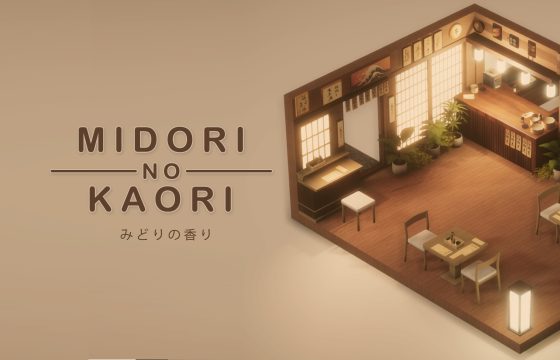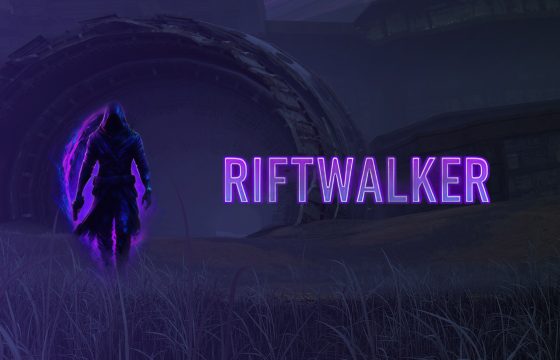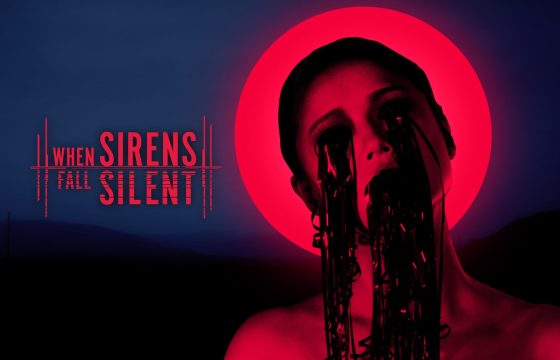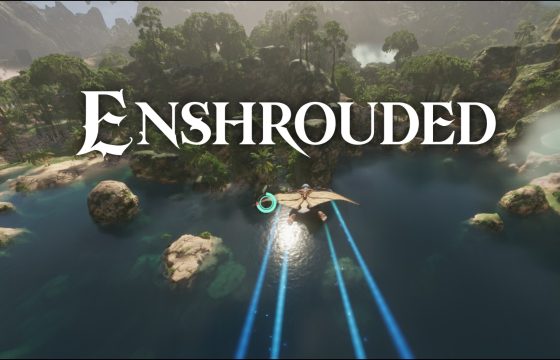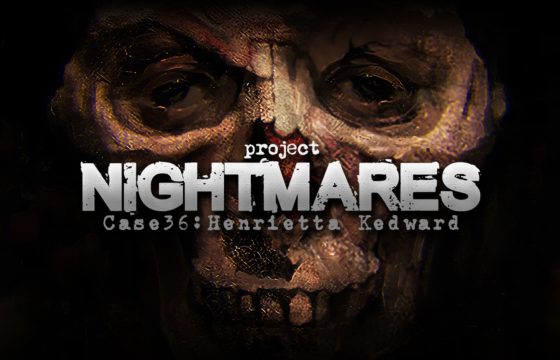A surreal and psychological hand-drawn action platformer set deep within the human psyche.
When I first tried out The Perfect Pencil demo, I felt strangely at ease, as if I’d teleported into the magical, imaginative world I desired. A surreal feeling, but also ideal, almost of well-being, to be honest. A video game that proudly reveals all of its nuances while providing truly exceptional content depth.
Perhaps the enigmatic artifact I have yet to reveal is the narrative itself. A lore made up of numerous small fragments that the developers purposefully withheld from us with the demo. In any case, I believe the game’s greatest strength is the mystery that surrounds the protagonist and his story, which is behind a decidedly distinct symbology, accompanied by a charming and delightful 2D hand-drawn style.

The Perfect Pencil is the latest video game from Studio Cima, a promising Milan-based studio of independent Italian developers founded in 2019. Theirs is a development team with a specific goal in mind: to take their strangest ideas and transform them into unforgettable experiences.
I can’t say anything about the release date because the developers will announce it soon. In terms of platforms, the game will be available on Nintendo Switch and PC for the time being, but it is unknown whether updates for the PlayStation and Xbox versions will be available in the future.
The Perfect Pencil promises an immersive experience by fusing the excellent game features of traditional action platformers with the exploratory versatility of the Metroidvania sub-genre.

In this article, I’ll go over the game’s main features, as well as my impressions of the demo and some of my very personal expectations for the full game experience.
Abandon Hope All Ye Who Enter Here
An ominous and chilling inscription stood in front of the massive Gate of Hell, reading: “Abandon Hope All Ye Who Enter Here“. The inscription depicts the eternal agony of the Underworld’s damned souls. The souls who dwell in the circles of Hell have lost hope, intellect, and every other reason to believe in a worthy afterlife, and have been cast into an endless abyss.
This is one of the most symbolic passages in Dante Alighieri’s work. Dante appears discouraged, almost saddened at the prospect of traversing this desolate and forgotten land. Virgil comforts him and invites him to mentally prepare for the tragic journey ahead.
But why did I use such a classic as well as unusual example to introduce you to the story of The Perfect Pencil? Is there a link between this significant excerpt from Dante Alighieri’s literary work “Inferno” and the game?

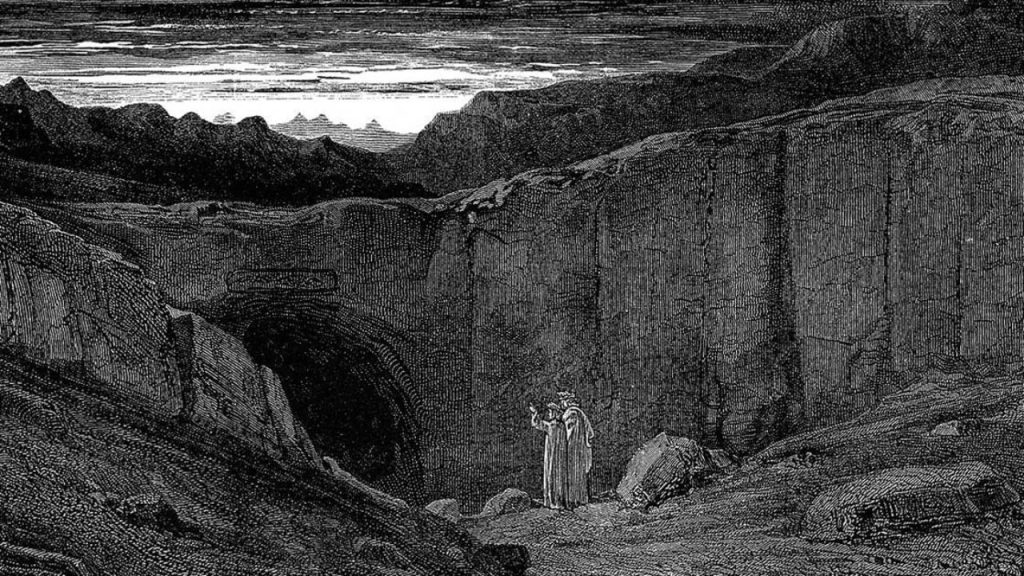
The narrative of Studio Cima’s new video game focuses on the eternal conflict between resignation and hope. Both of these are recurring themes in Dante Alighieri’s poetry. Furthermore, a closer look at the two works reveals some intriguing common points on both sides, such as symbolism, a significant psychological impact, and an apparently lost and forgotten world.
A potentially extreme analogy, but necessary to describe The Perfect Pencil‘s dystopian and illusory world.

The Perfect Pencil’s mysterious and distinct narrative component is difficult to identify clearly, so much so that all of the events and numerous situations that the protagonist must face appear confused or faded from a psychological standpoint.
The demo begins with a brief text sequence introducing John, a helpless, headless, and seemingly unconscious character. Suddenly, a metallic voice enters the scene, seemingly knowing our predicament all too well, and invites us to proceed. The dark and unsettling atmosphere gradually dissipates.
A strange character who lives near a lighthouse (He is the metallic voice I mentioned earlier) places a camera on John’s head, allowing him to see for the first time. He appears to be knowledgeable about the nature of the location, pointing out that we’re not the first to arrive in this surreal world.

A strange interference with the camera unexpectedly projects a creepy creature that scares John as it approaches menacingly and with strange intentions. What creature is this? What is it that she wants from John? So many questions remain unanswered. The strange character refers to her as the fearsome and frightening cause of everyone’s fall. To find a way out, you’ll have to cross her kingdom and obliterate her once and for all.
The World of Fear
After finishing the introductory section, players will enter a cave filled with plants and strange characters. Here, our protagonist encounters a strange, untrustworthy man with a large pencil stuck in his foot. The man appears overly calm and believes John’s assistance is unnecessary, instead urging him to let it go and continue on his way.
John approaches him, attempting to extract the pencil. The man, irritated by his persistence, tries to grab the protagonist in order to hit him. John quickly walks away, taking the pencil from the man’s foot. He is now ready to defend himself.

A short tutorial will now begin, explaining how to hit enemies in the game. At the end of the tutorial, you’ll have knocked out the man, and he’ll flee, vowing vengeance.
The hour-and-a-half demo includes a fully explorable interconnected area with numerous secrets, an introduction to the game’s platform component, an engaging and practical combat system, and some side missions.

It’s unclear why the entire area is full of adults acting like children. Their only wish is to return to sleep, regardless of what happens to them. It almost appears as if something or someone has stifled their growth or kidnapped their soul, dehumanizing them completely. The scenes convey a great deal of sadness and resignation, nearly to the point of depression.
What John is dealing with is a world that has given up on growth as a result of the catastrophic consequences of man’s actions. Man has created a safe and impenetrable mental prison for himself, from which he can only escape by his own bravery. Sleep and laziness become the only ways to avoid facing the truth, and rather than confront their fears, men prefer to sleep and succumb to sadness.

In the demo, men in cages crawl menacingly after John, representing perpetual childhood captivity. Others ,wrapped in pillows, are throwing themselves at John as he walks. These foes are dangerous because they attack as soon as you get close to them. Others curled up and crawled across the platforms like disgusting worms.
Even your enemies have symbolic meanings. We could assume that their current condition reflects their inability to overcome a specific childhood fear. Every aspect of the game has got a symbolic and literal interpretation. It’s up to you to figure out what it means.


You’ll fight them with your powerful combat pencil. The pencil has a sword-like handle, allowing you to use it as a standard combat weapon, delivering simple, charged, or healing slashes. Some jumping slashes are supplements of these. They are especially useful for hitting enemies positioned on higher platforms.

Our camera-boy possesses another intriguing ability, which is extremely useful for analyzing the surrounding environment and easily uncovering some secrets. The camera’s scanning ability allows John to examine specific objects, resulting in engaging multiple-choice dialogues with the NPCs. Furthermore, the inventory will be useful to examine the objects or artifacts discovered along the way, which will undoubtedly help to reveal what the narrative will be.

In the selection menu, you can also consult the map to get oriented and check your equipment to learn how to make the most of your abilities and your powers.


The gameplay experience was satisfying and engaging, with some hidden areas and a wide range of interesting characters. The only thing that puzzles me is the placement of the checkpoints. A particularly unsettling game mechanic, both because of the game’s general difficulty and because it disrupts the excellent rhythm established by the narrative and gameplay.
On the other hand, this minor flaw allowed me to more closely examine the surroundings and learn how enemies attack, but it can become frustrating in the long run, especially if you are unfamiliar with the map’s interconnected structure.

The demo boss is the last challenge. A massive man dressed as a baby rolls and cries at us, attempting to attack us. In fact, defeating him wasn’t all that difficult. The demo then concludes with an unexpected and overwhelming twist, which I will not reveal to avoid spoilers.
A wonderful contrast between Harmony and Disorder
The Perfect Pencil’s unmistakable style is just one of the demo’s most notable features. The soundtrack and color palette convey a specific mood, progressing from warmer and more subdued tones and atmospheres seasoned with an unsettling feeling of anxiety or bad mood. It’s almost as if the developers wanted to “trick” the player’s psychology by turning what could have been a comfort zone into a non-comfort zone.
I noticed this constant contrasting relationship between harmony and disorder from the beginning, as if even the environments themselves were affected by some sort of psychological factor. It’s amazing how the developers were able to imbue ordinary objects with an unusual sense of disturbance and anguish.

The style used is remarkable and impressive, and it contrasts with the constant feeling of psychological discomfort created by some elements, giving the themes and characters some purposefully disturbing nuances. What strikes me the most is how the developers have managed to distort my perceptions, creating something that is both extremely familiar and darkly creepy.
The atmosphere initially takes on laughing and childish connotations before overwhelming you with all of the psychological consequences of your sensations. The grotesque characterization is a reflection of how psychological damage can devastate an entire society. But is what we’re seeing an illusion or reality?
Symbolism, Psychology, and Anxiety Disorder
Personally, I am thrilled when a video game can both educate and entertain the player. This is why, in my opinion, we must refer to video games as works of art when discussing them. The Perfect Pencil conveys an extremely powerful message that has an immediate impact on our psychology and soul.
Stefano, the game’s creator, shared a tweet that reveals even more details about The Perfect Pencil. His personal experience was such an important source of inspiration for the development of his project that it was included as the main theme. In fact, the game was inspired by his anxiety disorder.
The psychological aspects of the game, as well as the frequent symbology, combine to make The Perfect Pencil a wonderful personal experience that everyone can live and interpret in their own way. This is why I believe Stefano’s talent, inspiration, and artistry are special qualities that he should guard carefully.
And I have to say that the majority of the demo blew my mind. Who knows if the full game will be as impressive as the demo!
Dream, Nightmare, or Reality?
The Perfect Pencil demo answered many of my questions, but it also raised some existential concerns. Is the protagonist living in a fictitious and illusory world? Is what you’re going through a dream or a nightmare? Why is it that such a seemingly familiar world does not want us to discover the truth?

What if this strange and familiar world is the result of a child’s nightmare? There are some details that could lead us to believe this hypothesis, such as the protagonist’s clothes, a game world with childish connotations, and an antagonist who reminds us of the monster under the bed they told us about as kids.
Why are we not brutally killed when we are defeated in battle, but rather carried away in a tender bundle reminiscent of the legend of the stork bringing newborn babies?

My other two hypotheses are more distant but still noteworthy. The first, which I believe is the most plausible, could depict the introspective journey of a young boy who must overcome his fears. Another possibility is that the protagonist is depressed, and his mind has created a fictitious world against which he is struggling. There are numerous personal interpretations of the story that we could give based on our personal traits.
I have a lot of questions for Studio Cima, but for now, I’ll concentrate on analyzing the demo I tried.
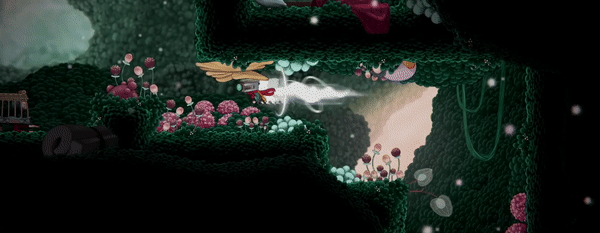
The demo is a well-curated and engaging product with many good ideas. The Perfect Pencil’s narrative and style are undoubtedly the most intriguing aspects of the game, which manages to deliver solid gameplay with many excellent qualities and few flaws.
Despite some animations that aren’t always fluid and a checkpoint system that isn’t always perfectly localized, the demo is of high quality and offers a deep involvement with many interesting ideas that I’m eager to explore. If the final version of the game maintains these standards or raises the level of production even further, I believe this game will be a real hidden gem.
In the meantime, I recommend you try the game’s free demo on Steam.
Useful links:
Studio Cima (official website)



